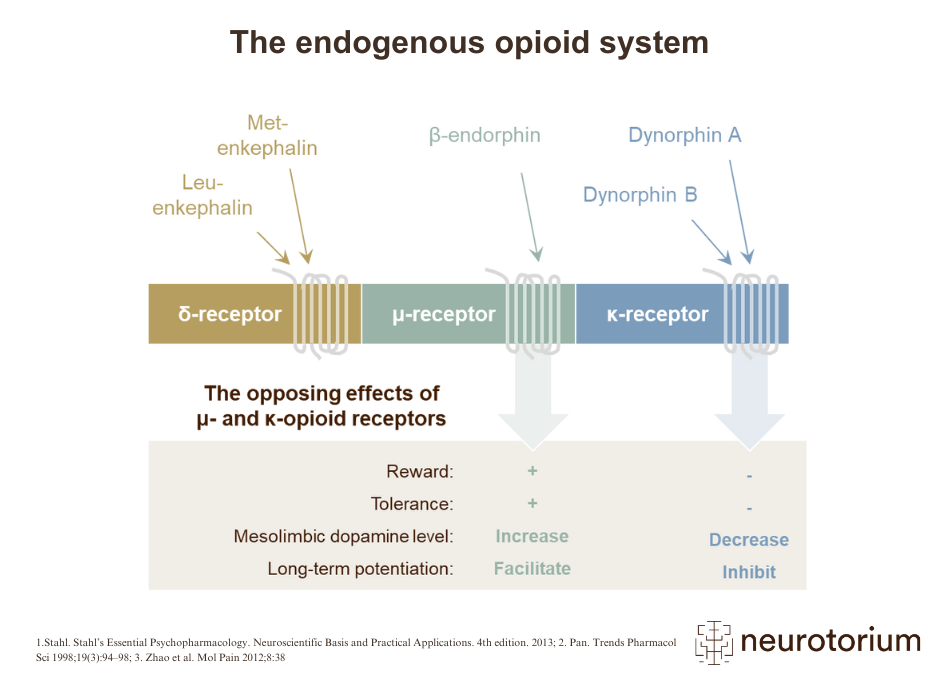The endogenous opioid system of the brain consists of several neurotransmitters that bind in different ways to 3 different G-protein coupled receptors, called the delta (δ), mu (μ), and kappa (κ) receptors. These 3 receptors are localised to subtly different parts of the brain, and have different physiological effects.1,2
Access our slide deck on neurobiology and aetiology in substance use disorders and other addictions





